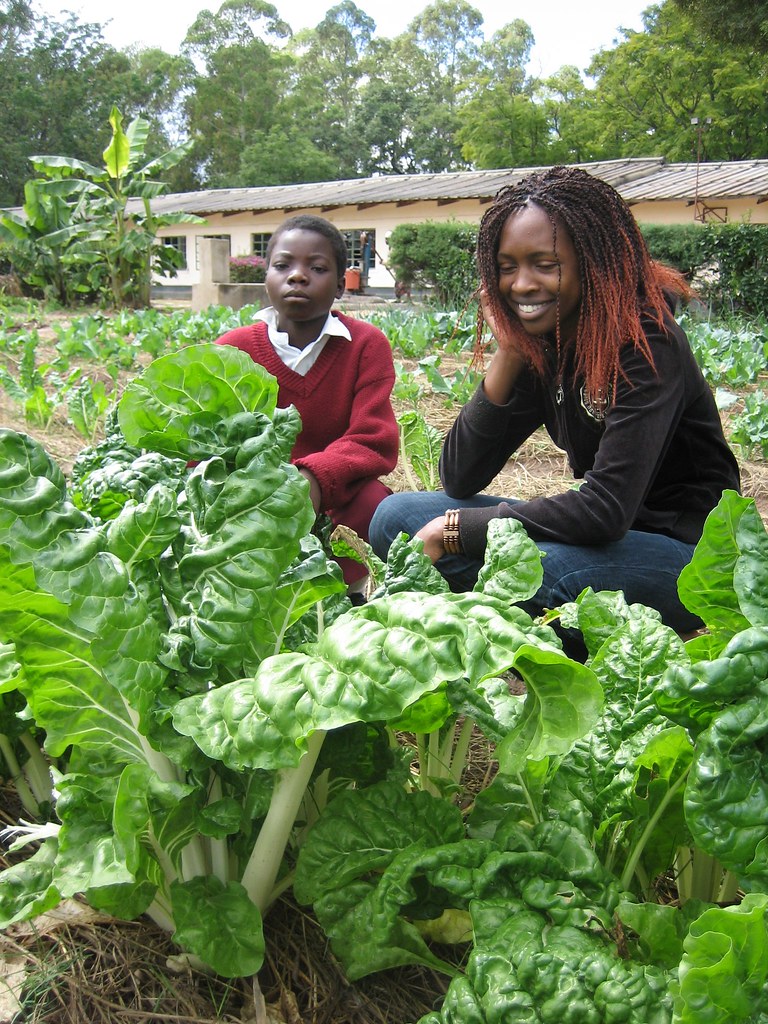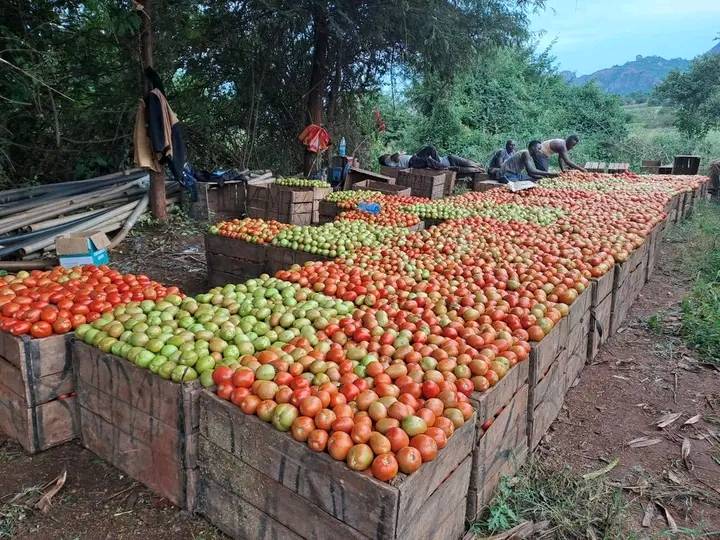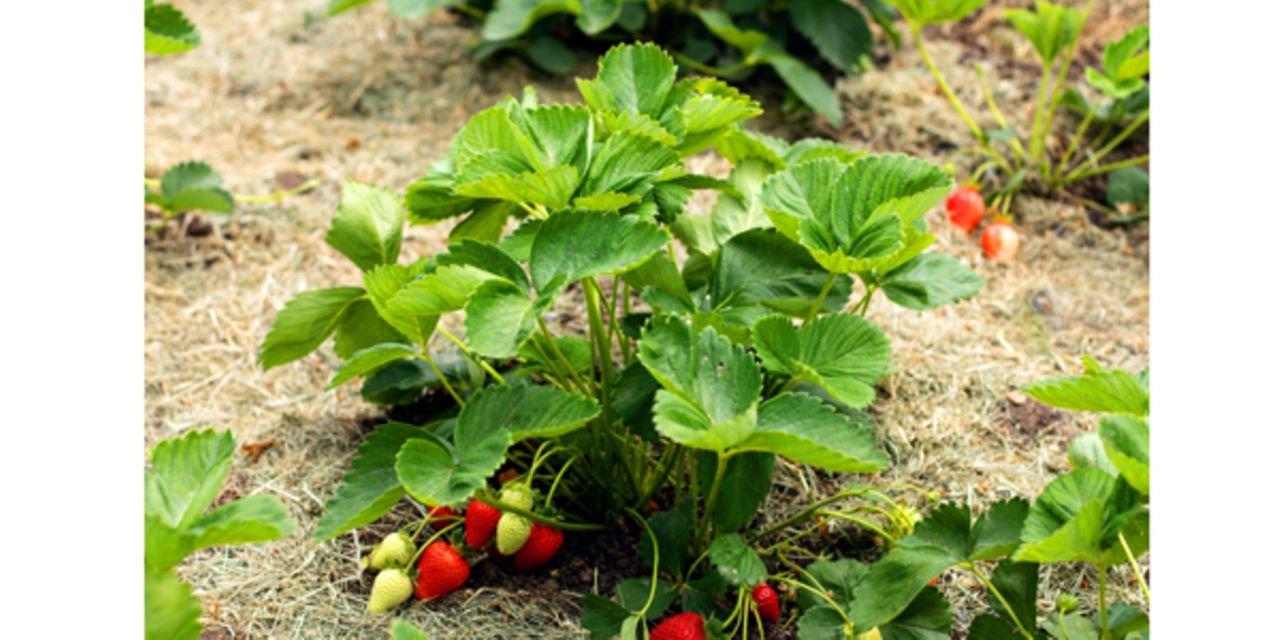SPINACH FARMING GUIDE
1. Ecological Requirements
 Being a cool-weather vegetable, spinach can withstand the first frost of temperate climates.
Being a cool-weather vegetable, spinach can withstand the first frost of temperate climates. Temperatures ranging from 4 to 16°C are ideal for germination and growth. It can, however, withstand temperatures as low as -7 degrees Celsius.
Temperatures ranging from 4 to 16°C are ideal for germination and growth. It can, however, withstand temperatures as low as -7 degrees Celsius. A well-draining loamy soil with a pH of 6.4 to 7.0 is ideal for spinach growth. It is vulnerable to excessively high pH levels and acidic soil.
A well-draining loamy soil with a pH of 6.4 to 7.0 is ideal for spinach growth. It is vulnerable to excessively high pH levels and acidic soil. Even though spinach prefers full sun, it can still yield a substantial amount in partial shade.
Even though spinach prefers full sun, it can still yield a substantial amount in partial shade. In hot weather, seeds germinate slowly or may not germinate at all. Additionally, heat causes plants to bolt (go to seed) which ruins the crop’s flavor.
In hot weather, seeds germinate slowly or may not germinate at all. Additionally, heat causes plants to bolt (go to seed) which ruins the crop’s flavor.2. Planting & Cultural Practices
 Spinach is propagated solely by seed.
Spinach is propagated solely by seed. Spinach is first grown in a nursery before being transplanted into the main field.
Spinach is first grown in a nursery before being transplanted into the main field.3. Nursery Establishment
Procedure
 The nursery bed should be set up with one meter of width and the necessary length.
The nursery bed should be set up with one meter of width and the necessary length. Plant seeds in the bed at a depth of approximately one inch.
Plant seeds in the bed at a depth of approximately one inch. Cover the seeds lightly with soil.
Cover the seeds lightly with soil. Add a thin layer of dry grass (mulch) to the nursery bed.
Add a thin layer of dry grass (mulch) to the nursery bed. Water the nursery bed.
Water the nursery bed. Seeds germinate in approximately 5-7 days.
Seeds germinate in approximately 5-7 days. Water seedlings regularly.
Water seedlings regularly.4. Transplanting
 After 4-5 weeks, when they have 3–4 leaves, seedlings are prepared for transplanting. However, this relies on the local ecological elements, such as temperature.
After 4-5 weeks, when they have 3–4 leaves, seedlings are prepared for transplanting. However, this relies on the local ecological elements, such as temperature. It is best to transplant on a cloudy day or in the late evening when the sun low.
It is best to transplant on a cloudy day or in the late evening when the sun low.Note:
 Wet the seedlings an hour before removing them from the nursery. This prevents root damage.
Wet the seedlings an hour before removing them from the nursery. This prevents root damage.Procedure
 Choose a location with full sun or light shade and well-drained soil.
Choose a location with full sun or light shade and well-drained soil. Two to three weeks in advance, plow the ground to a minimum depth of eight inches and harrow the area.
Two to three weeks in advance, plow the ground to a minimum depth of eight inches and harrow the area. Prepare the raised beds. It is advised to use these for appropriate root establishment and drainage. Measurements for the beds should be 15 cm high, 1 meter wide, and roughly 100 meters long.
Prepare the raised beds. It is advised to use these for appropriate root establishment and drainage. Measurements for the beds should be 15 cm high, 1 meter wide, and roughly 100 meters long. Mix soil with manure and DAP.
Mix soil with manure and DAP. Water the beds unless the soil is sufficiently wet.
Water the beds unless the soil is sufficiently wet.Plant the seedlings into the beds. This should be done at the same depth as when they were growing in the nursery. They should be spaced 12-15 inches apart in rows, with 5 inches between plants. This allows the leaves to reach their full size.
 Thinning: Once seedlings have grown to about two inches, they should be thinned to 3-4 inches apart. This reduces competition and ensures adequate air circulation within the crops.
Thinning: Once seedlings have grown to about two inches, they should be thinned to 3-4 inches apart. This reduces competition and ensures adequate air circulation within the crops. Weeds: In addition to harboring pests, weeds compete with crops for growth-promoting elements like nutrients. They must therefore be controlled. Weeding spinach requires caution because its roots are shallow and easily damaged.
Weeds: In addition to harboring pests, weeds compete with crops for growth-promoting elements like nutrients. They must therefore be controlled. Weeding spinach requires caution because its roots are shallow and easily damaged. Mulching: Mulching keeps the soil moist and suppresses weeds. Mulch that has decomposed releases nutrients into the soil, which the crop absorbs. It also helps to prevent soil erosion.
Mulching: Mulching keeps the soil moist and suppresses weeds. Mulch that has decomposed releases nutrients into the soil, which the crop absorbs. It also helps to prevent soil erosion. Irrigation: Regular watering and irrigation are necessary because spinach needs a lot of moisture.
Irrigation: Regular watering and irrigation are necessary because spinach needs a lot of moisture.5. Nutrition
 Sufficient nutrition is necessary for spinach to grow and develop properly. Hence, it is imperative to guarantee that these nutrients are accessible and in the required amounts.
Sufficient nutrition is necessary for spinach to grow and develop properly. Hence, it is imperative to guarantee that these nutrients are accessible and in the required amounts. Two weeks after successful germination, Super Gro which has NPK Nitrogen(N) 72g per litre, Phosphorus (P) 45g per litre and Potassium (K) 30g per litre can be used to ensure the health and productivity of your crop by providing the essential nutrients needed for optimal plant health, growth and root development.
Two weeks after successful germination, Super Gro which has NPK Nitrogen(N) 72g per litre, Phosphorus (P) 45g per litre and Potassium (K) 30g per litre can be used to ensure the health and productivity of your crop by providing the essential nutrients needed for optimal plant health, growth and root development.6. Maturity, Harvesting & Post-Harvest Handling
 Once the spinach leaves reach the desired size, they are ready to be harvested.
Once the spinach leaves reach the desired size, they are ready to be harvested. The entire plant can be harvested at once (as a bunch), or individual leaves can be removed from plants one layer at a time.
The entire plant can be harvested at once (as a bunch), or individual leaves can be removed from plants one layer at a time. Picking just the outermost leaves encourages the center/younger leaves to enlarge, which keeps the plant producing. It also provides the benefit of temporarily delaying bolting.
Picking just the outermost leaves encourages the center/younger leaves to enlarge, which keeps the plant producing. It also provides the benefit of temporarily delaying bolting. Bunched spinach requires that the petioles be primarily shorter than the leaf blade and that the roots be trimmed short in accordance with grade standards.
Bunched spinach requires that the petioles be primarily shorter than the leaf blade and that the roots be trimmed short in accordance with grade standards. Because of its high perishability, spinach will not stay in good condition for longer than two weeks. If storage is extended beyond 10–14 days, wilting, leaf yellowing, and decay are likely to worsen.
Because of its high perishability, spinach will not stay in good condition for longer than two weeks. If storage is extended beyond 10–14 days, wilting, leaf yellowing, and decay are likely to worsen. Leaves can be refrigerated for about a week or the stems placed in fresh water in order to keep them fresh.
Leaves can be refrigerated for about a week or the stems placed in fresh water in order to keep them fresh.Note:
 A bitter taste quickly develops after maturity, so don’t wait too long to harvest or for larger leaves.
A bitter taste quickly develops after maturity, so don’t wait too long to harvest or for larger leaves. Regular harvesting is recommended, but before a second harvest, three to four weeks of regrowth are needed.
Regular harvesting is recommended, but before a second harvest, three to four weeks of regrowth are needed. When harvesting, avoid cutting older or yellowing leaves.
When harvesting, avoid cutting older or yellowing leaves. Spinach should be uniformly green, completely turgid, relatively clean, and free of damage.
Spinach should be uniformly green, completely turgid, relatively clean, and free of damage.




